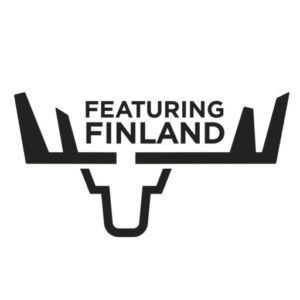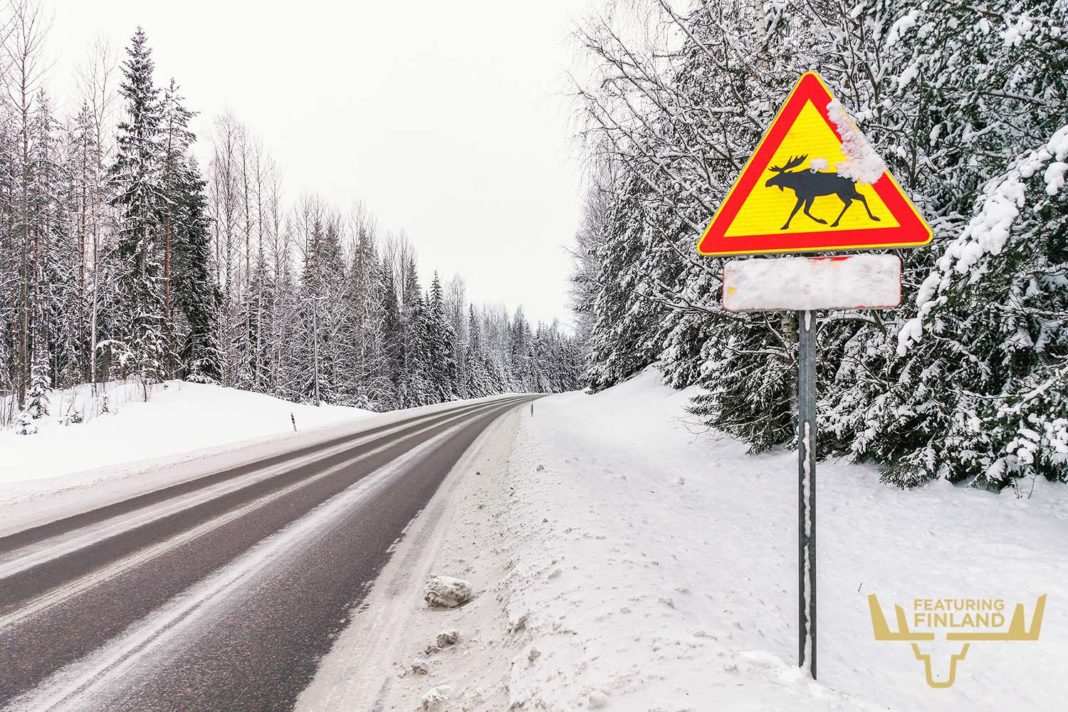
Finland is a country of long distances. While public transport works rather well in larger cities, a private car comes handy in the countryside. A tourist should seriously consider renting a car, as many nature attractions in particular are difficult to reach with public transport.
Finland is crossed by a few highways, the busiest being the E75 (in Finnish Nelostie or Highway number 4), which runs from Helsinki in the south to Utsjoki in the north. But instead of driving on highways it’s worth at least occasionally turning to smaller local roads. Along them the journey goes more slowly, but at the same time one can marvel at fascinating landscapes and peculiar sights of remote regions.
This article provides practical information and tips for driving in Finland, and introduces four memorable road trips: the Archipelago Trail, the Saimaa Circuit, the Eastern Finland Tour and the Northern Lapland Round Trip.
Traffic in Finland
The Finnish road network is quite extensive and in fairly good condition. Traffic is smooth and there is no congestion or traffic jams. There are no toll road sections in Finland.
In Finland, drive on the right. The headlights must always be kept on – even on a sunny summer day.
The use of a seat belt is mandatory on both the front and rear seats.
Compared to many other countries, Finnish traffic is calm and safe. Motorists follow traffic rules admirably well. All cars have compulsory third party insurance, which will pay for (at least) a second-party damage.
The speed limit in urban areas is usually 40-50 km/h and on countryside roads 60-80 km/h. Many of Lapland’s low-traffic roads have 100 km/h speed limits in summer and 80km/h in winter. On motorways you can drive up to 120 km/h and in winter 100 km/h.
Police keep reckless drivers in check with automatic speed cameras. The fine for a slight speeding or using a mobile phone while driving is 100-200 euros. The limit for drunk driving is 0.5 per mille, which is maximum one mug of beer. Remember: if you drink, don’t drive!
Parking in Finnish cities is strictly controlled, but fortunately parking restrictions are clearly marked with traffic signs. Parking fees can usually be paid by debit card to a vending machine. Most free parking spaces have a time limit. Your own time of arrival must be indicated by a parking disc on the dashboard. Most hotels have free parking for their guests.
Breaking into cars is very rare. However, do not leave bags or valuables in the car – especially overnight.
Fuel prices in Finland are high because of taxes. A liter of petrol costs about 2 euros. Gas stations are self-service. Many gas stations are unstaffed cold stations where you can only pay with a card.
Beware of wildlife – reindeer, deer and moose on the road
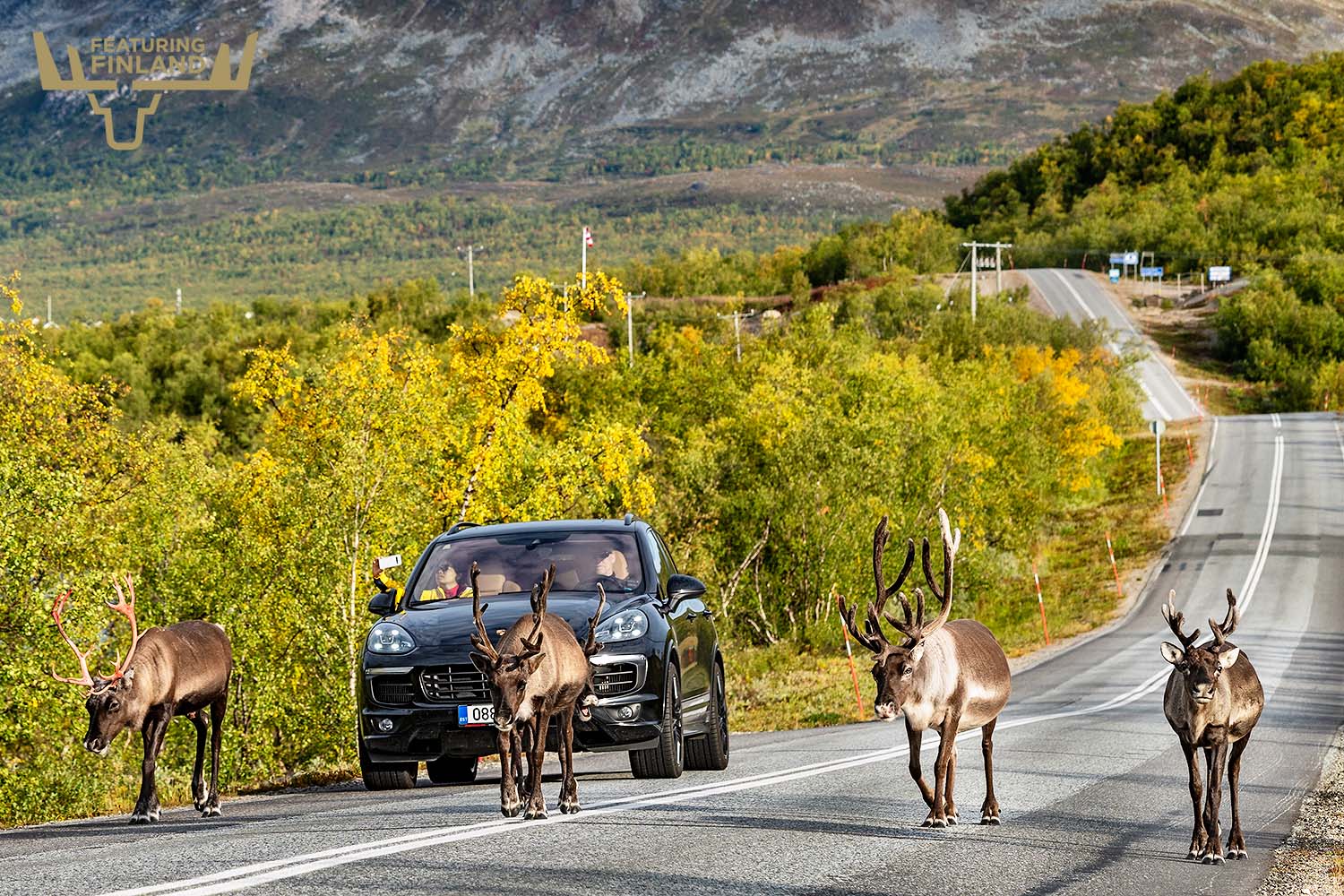
You should keep your eyes peeled especially in Lapland, as reindeer graze along the road shoulders. Frankly, they are stupid (or at least very indifferent) creatures, and about 4,000 reindeer collisions occur in Finland every year. The border of the reindeer husbandry area runs north of Oulu and Kuhmo.
If you want to take a photo of reindeer walking on the road, stop your car only in a safe spot with good visibility and switch on the turn signal!
Although the motorways in southern and central Finland are protected by sturdy game fences, smaller roads have more than 10,000 car accidents with wildlife every year. In Turku and Tampere regions, especially white-tailed deer pose a danger to motorists. Elsewhere in Finland the biggest hazard is moose (elk).
Colliding with a multi-hundred-kilo moose is a serious matter – every year a few drivers die in moose crashes in Finland. The biggest risk for a moose crash is during the autumn hunting season at dusk. The most common road crossing spots for moose and deer are marked by traffic signs.
If you hit a reindeer or a wild deer, always report to the police! Sure, the insurance will cover the damage to the car, but local authorized hunters have to find out how seriously the animal has been injured.
Driving in Finland in winter
In winter the conditions can be very slippery. Studded or friction tires are used from November to March, but in spite of them it’s advisable to get ready for longer braking distances, i.e. to maintain a safe distance to the car ahead.
The roads are plowed after a snowfall, so even in Lapland one can travel with a normal car – a four-wheel drive or SUV is not necessary.
Before setting off, it is advisable to set aside ten minutes for cleaning the windshields. In severe frosts, the car’s battery charge may drop during the night, so many drivers use an electric engine heater for a couple of hours before heading off. If the battery is completely empty and the car doesn’t start, you can call the Road Service (in Finnish Tiepalvelu, phone: 0200-8080) to provide “technical first aid”, i.e. additional power for starting.
In the event of an accident, you should have warm clothing in the car. In Lapland, for example, it can take a couple of hours to wait for a tow truck, and in winter the temperature can drop down to -30 degrees Celsius.
But there are also positive aspects to driving in winter, such as the absolutely stunning snowy scenery! In Eastern Finland, a really extraordinary experience awaits: the Koli-Vuonislahti ice road running through Lake Pielinen. As the name implies, the road runs on tens of centimeters thick ice of a lake! The length of the ice road is 7 kilometers. The speed limit is 50 km/h and stopping or overtaking is prohibited.
Renting a car in Finland
In Finland the same rules apply to car rental as elsewhere in Europe. A credit card and 21 years of age are required for renting a car.
Renting a small car (for example, Opel Corsa) costs about 50 euros a day at its cheapest. You can usually find the best price when you book well in advance with a comparison website like Rentalcars.com that brings together all major international car rental companies (Budget, Avis, Europcar, etc.). The discount can be huge compared to the price on a car rental company’s own webpage.
It is advisable to take additional insurance, which will cover any damage that might occur to the car. There are many levels of supplementary insurance, but the best acronym is SCDW, or Super Collision Damage Waiver.
Often the most convenient place to pick up and drop off a rental car is the airport, where all large car rental companies have an office.
It’s not worth renting a car in Helsinki, as public transport works perfectly. Everywhere else in Finland you will be just fine with an ordinary car – a four-wheel drive is not necessary even in winter conditions of Lapland.
Most rental cars in Finland have manual transmission, but automatic transmission is also available. Automatic transmission can be helpful if you are from UK or some other country with left-side traffic.
If you don’t rent a navigator, download an offline map of your destination from Google Maps or get a Finnish pre-paid SIM card for your mobile phone from the airport kiosk.
Renting a motorhome is a good option for a family, because a road trip with a home on wheels can become cheaper than renting a regular car and staying in hotels. There is an extensive network of campsites in Finland where you can stay overnight with a motorhome. There are also bush parks in Lapland and Eastern Finland, but remember that even a short-distance off-road driving is prohibited without a permission of the landowner.
Check out the best offers for car rental in Finland: Rentalcars.com
The best road trips in Finland
Below is a short introduction of 4 memorable road trips in Finland. All are ring trails that can be cruised for a couple of days or even for a full week, as there is plenty to see along the way!
Archipelago Trail – road trip in the Baltic Sea coast
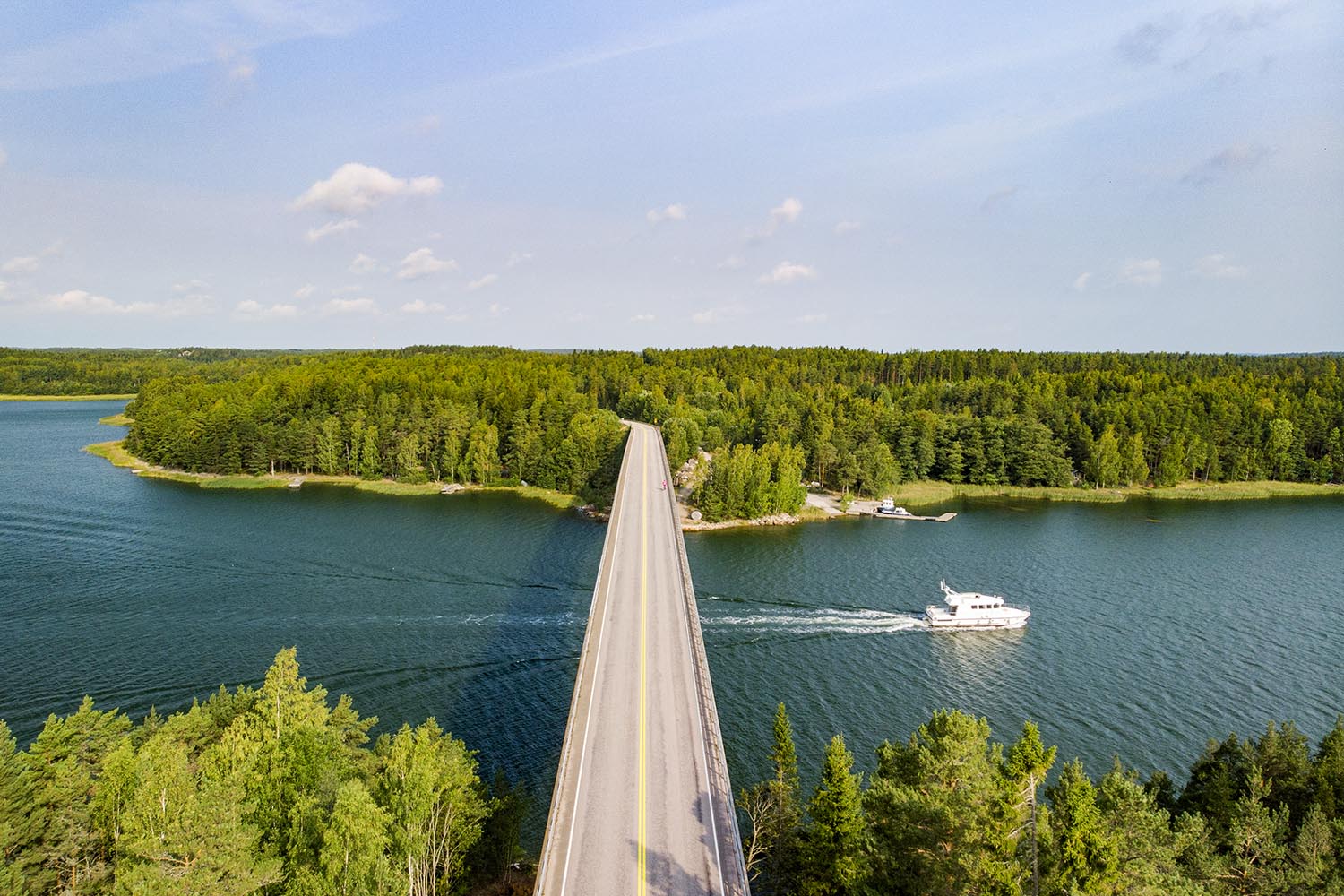
The magnificent Archipelago Trail is 250 kilometers long. It starts in Turku and ends in Naantali, both among the best summer cities in Finland.
The Archipelago Trail can be toured by car or bicycle. A dozen bridges and eight ferries connect the islands.
By car, the route can be driven in one day, but it’s much more fun to enjoy the archipelago without hurry. You should spend at least a couple of nights along the Archipelago Trail. That leaves enough time for day trips to fascinating destinations like the island of Seili, which served as a leper colony and mental hospital, Nauvo, known as the Riviera of the archipelago, and the barren outer islands of Jurmo and Utö.
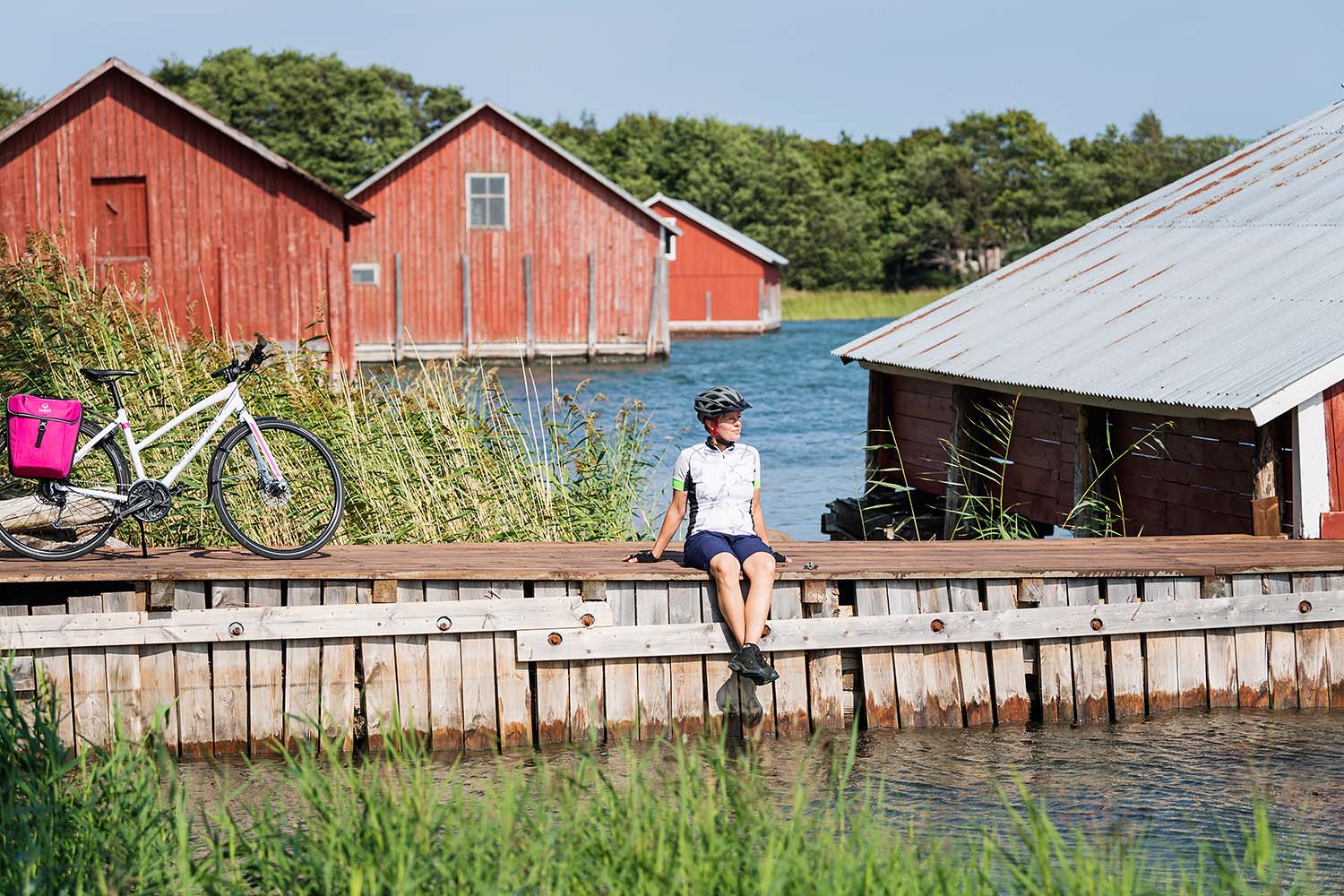
Archipelago Trail can be driven from May to the first day of September, when all ferries are in service. Most roadtrippers go around the ring route clockwise – but during the busiest holiday season in July, it’s worth going around counterclockwise to avoid queuing for ferries.
The most memorable places to stay along the Acrhipelago Trail are Hotel Nestor (build inside a former cow stable), Tackork Gård (farm with glass igloos) and Peterzens Boathouse (grass-roofed cabins).
Read more: Archipelago
Saimaa Circuit – road trip in the Lakeland

Saimaa Circuit starts in Mikkeli, located in the middle of Lakeland region, and travels 400 kilometers around the shores of Finland’s largest lake, Saimaa. The best time to travel in these parts is, of course, July and August.
Along the route you will find breathtakingly stunning lake sceneries of Puumala and Punkaharju, but also much more. Highlights of the Saimaa Circuit include Imatra Rapids with their historic power plant, the extraordinary (and a little spooky) Parikkala Statue Park, the picturesque Savonlinna town, known for its 15th-century Olavinlinna Castle and opera festival, and Linnansaari National Park, the home for the Saimaa ringed seal. This endangered creature can be spotted on boat safaris from Rantasalmi and Oravi.

The best places to stay on the route are the lovely Sahanlahti Resort and the popular Järvisydän Spa Resort.
Read more: Lakeland
Wild East Tour – road trip in the Eastern Finland
The wildest regions of Finland can be found in the east. Highlights of this road trip include national parks and wildlife; bears, wolves and wolverines can be spotted from a hide easily and safely. More flavor to this trip is added by the culture of Eastern Finland, which can be experienced especially in Nurmes and Ilomantsi.
This ring route starts from Joensuu, which is the largest city in Eastern Finland. With only 75,000 inhabitants Joensuu is just the right size for a short visit.
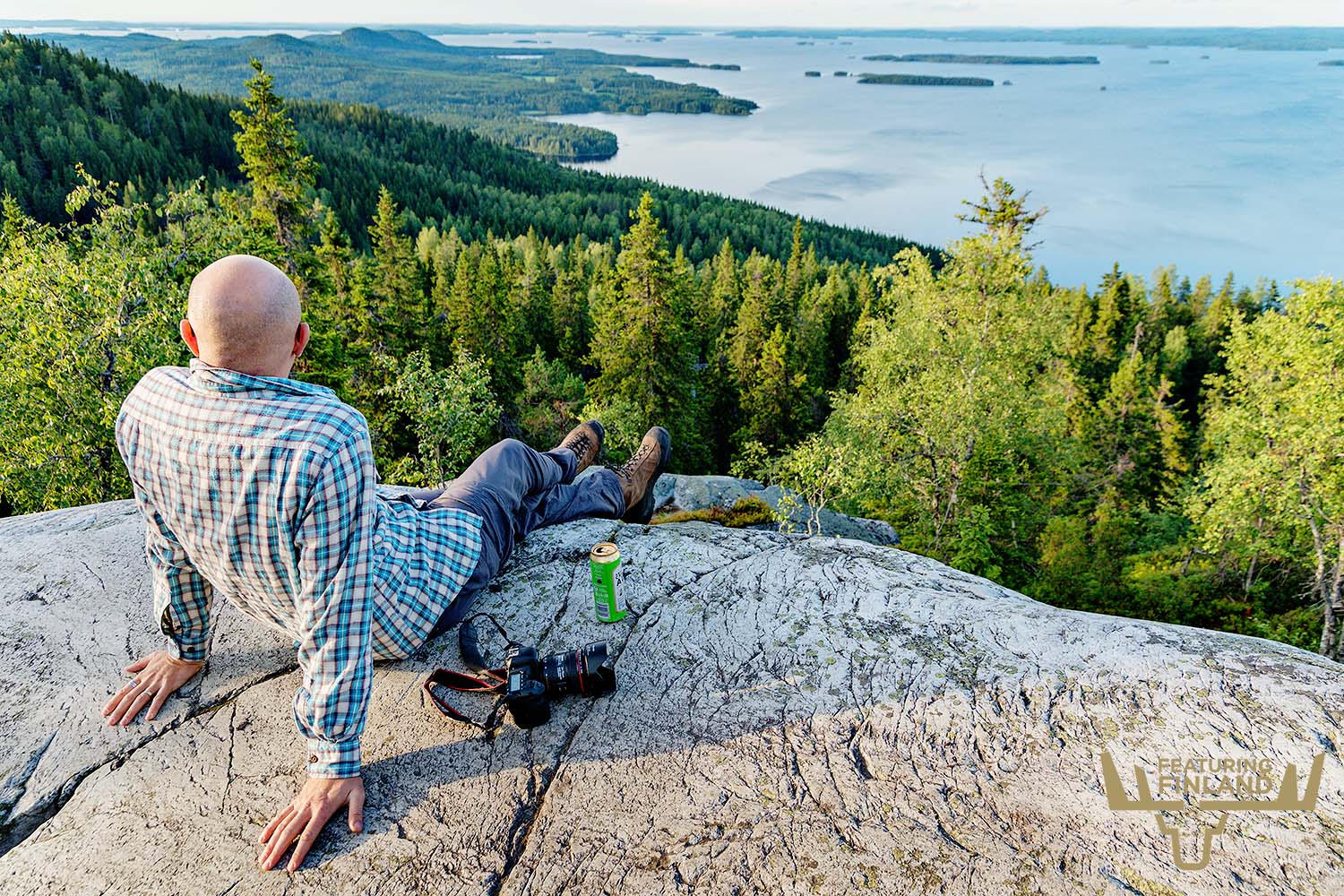
At the very beginning of the trip, you will see Finland’s most famous national landscape, which opens from the top of Ukko-Koli hill. Koli National Park is small but has a touch of luxury: at the top of a steep hill is an elegant Break Sokos Hotel Koli, where you can relax in a scenery spa after spending a day on the hiking trails.
Another good option for staying overnight is Nurmes. There is another scenery spa at Break Sokos Hotel Bomba, and the Bomba House which exhibits Karelian culture. For a more intimate accommodation – and a wonderful Karelian dinner – you should consider Guest House Puukarin Pysäkki.
After Nurmes a slightly longer leg has to be driven, as bears are waiting in Suomussalmi. Let’s be honest: the most unforgettable nature experience in Eastern Finland (and perhaps the whole of Finland?) is to watch the Finnish national animal, brown bear, in its natural habitat.

After a bear safari in Martinselkonen Wilderness Center you should head to remote countryside roads along the Russian border. Sights along the way include the Winter War monument on Raatteentie. Kuhmo region is a diverse nature destination: you can watch bears, go fishing, and rent a canoe on the lovely Lentua Lake. Most interesting place to stay in Kuhmo is Hotel Kalevala, inspired by Finland’s national epic.
More hiking trails can be found in Lieksa region in Ruunaa Hiking Area and Patvinsuo National Park. Also, Lieksa has the best place in Finland to spot a wolverine: Erä-Eero.
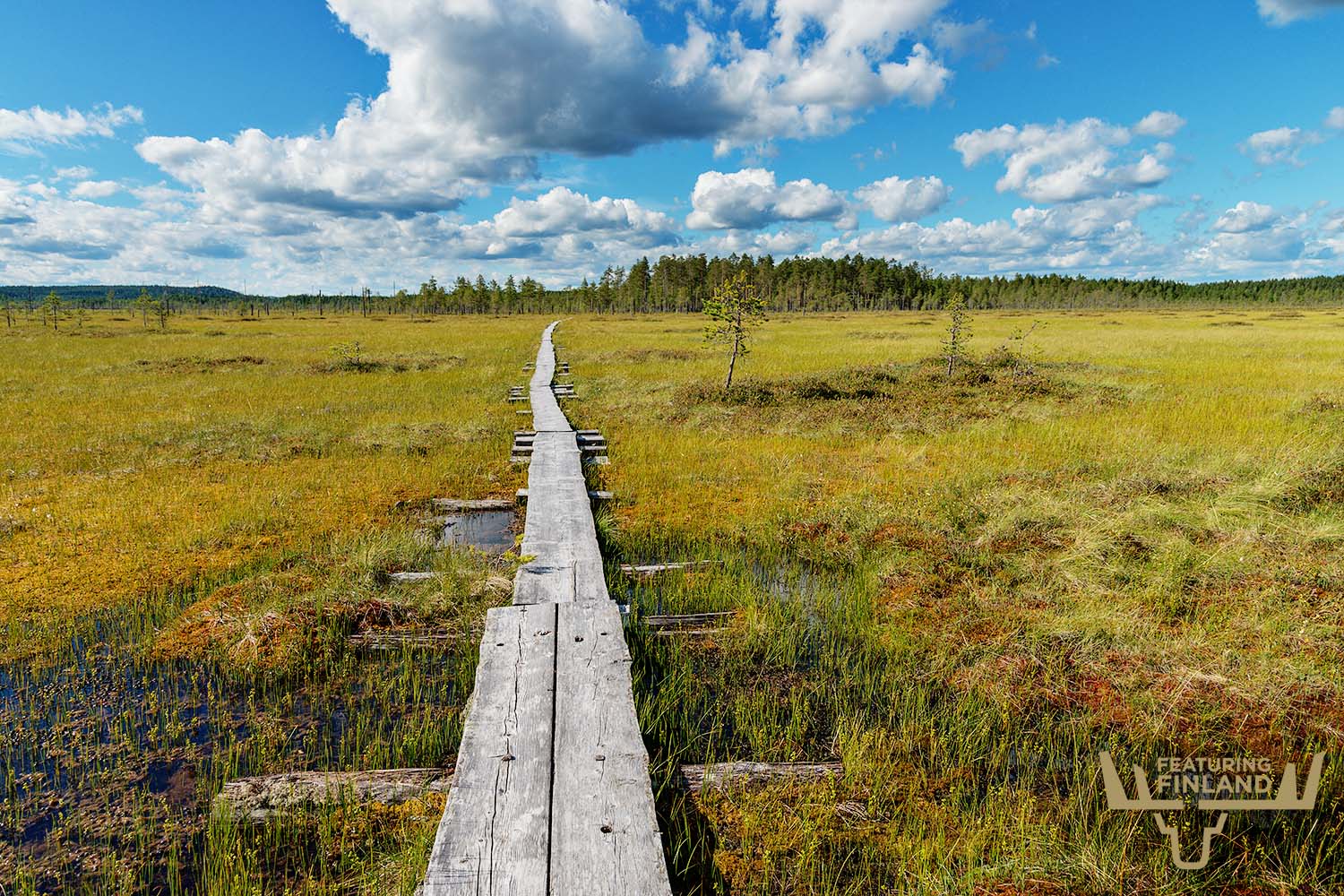
Before returning to Joensuu, visit Ilomantsi where you can get acquainted with Karelian culture and visit the battlefields of the Second World War.
The best time to tour around Eastern Finland is summer. The length of this route is almost 1,000 kilometers and there is so much to see and do along the way that it’s worth spending a whole week.
Read more: Wild East – Kainuu and North Karelia regions of Eastern Finland
Lapland Round Trip – road trip in the Northern Finland
There are many wonderful roads in Lapland. The best round trip is in the very north. In these parts the most beautiful season is September, when the autumn colors make the landscape glow in red and yellow.
It’s easiest to start the trip at Ivalo Airport – but if you fly to Rovaniemi and start from there, we recommend you to stop already before Ivalo, in Saariselkä area. Kiilopää Fell Center has beautiful hiking trails and the best public smoke sauna in Finland. Nearby is Lapland’s most legendary glass igloo resort, Kakslauttanen Arctic Resort.
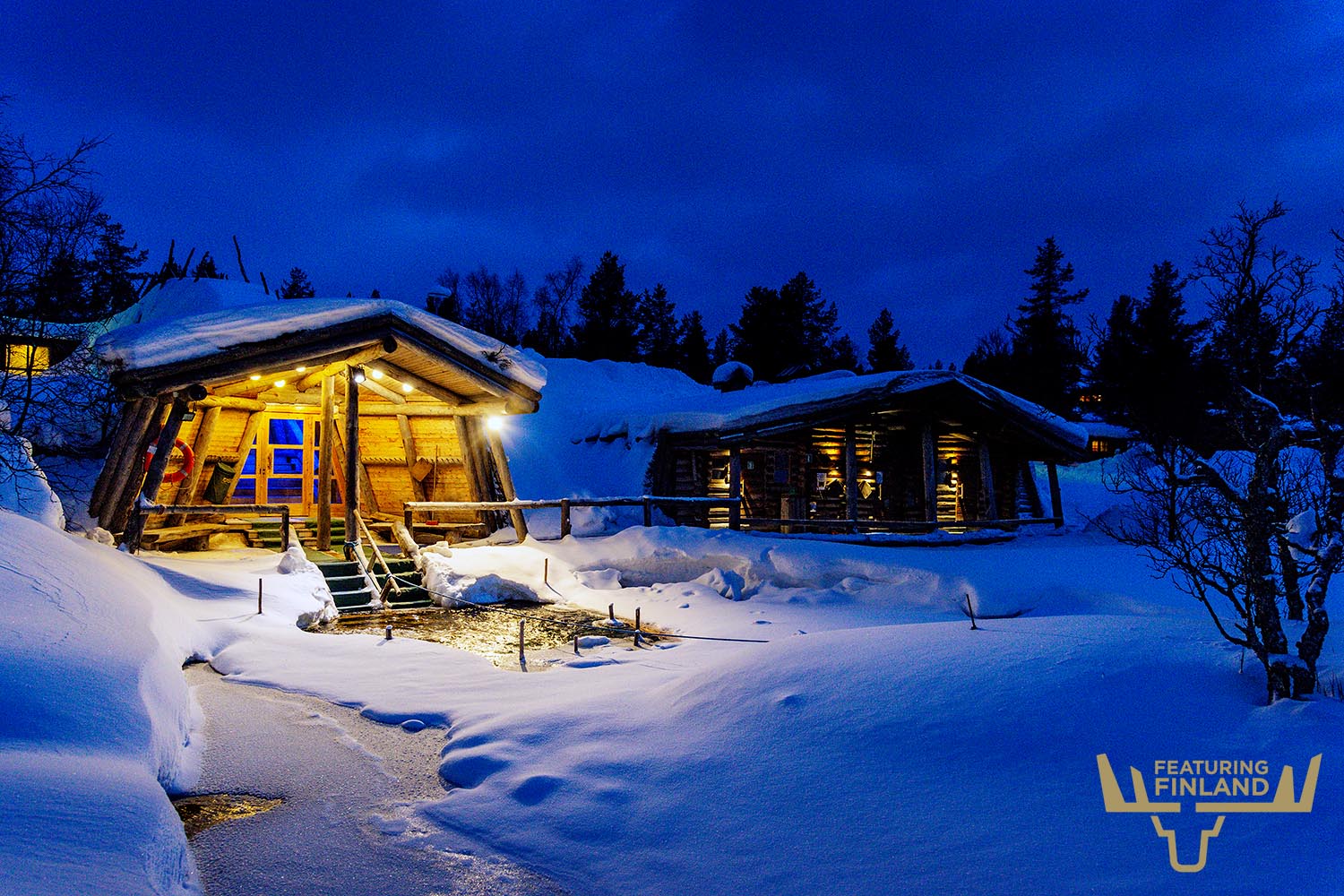
Inari, on the shores of Lapland’s largest lake, is the center of Sámi culture. In addition to the excellent Sámi Museum Siida, it’s worth visiting the best restaurant in all of Lapland. Aanaar Restaurant offers traditional fish and reindeer delicacies prepared with an ingenious modern touch. In the same building is the historic Hotel Kultahovi.
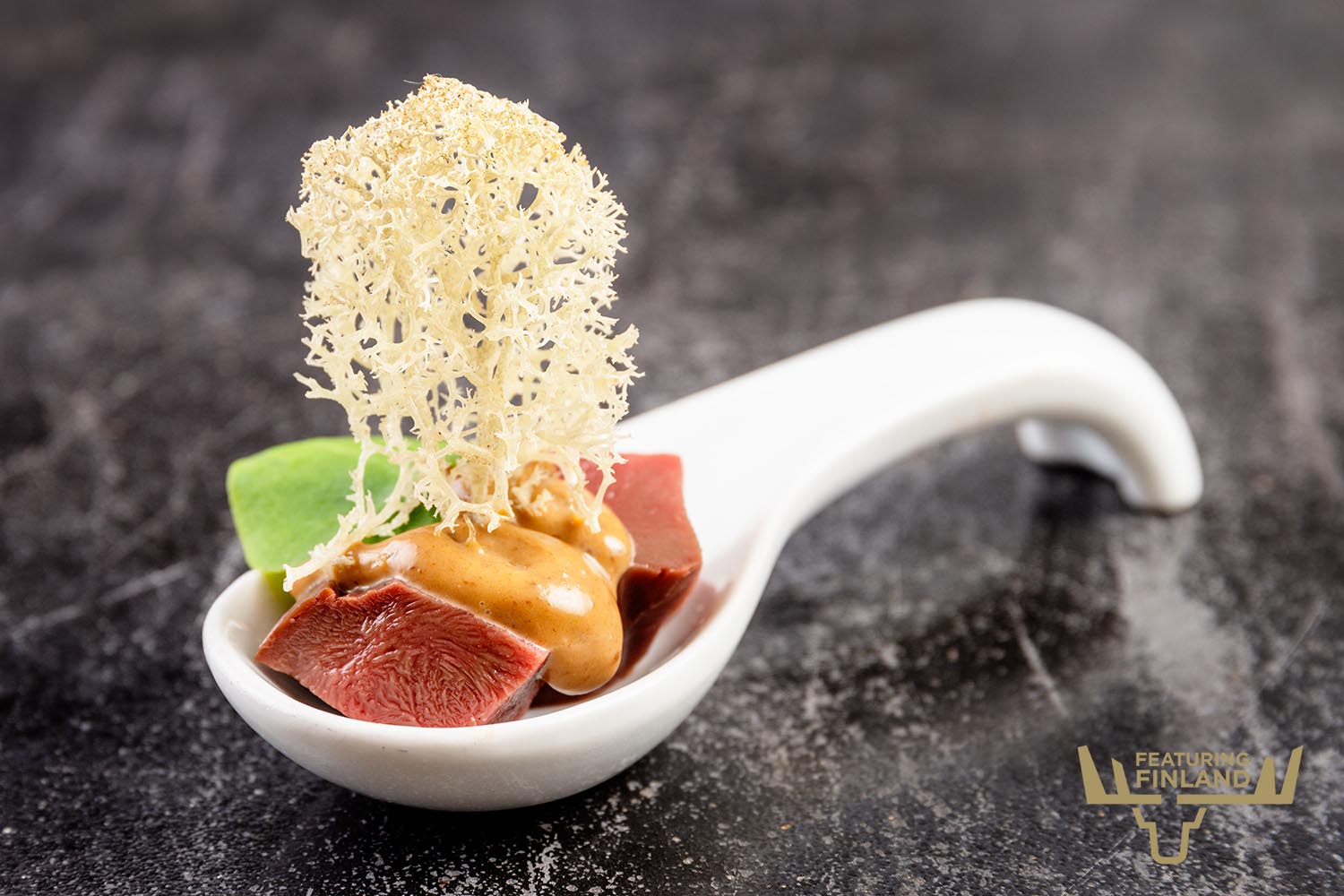
To the north of Inari, the legendary Kaamasentie road leads through extensive wilderness areas towards the Finnish-Norwegian border. There flows Teno, a mighty salmon river. A winding road follows Teno for about 150 kilometers, all the way to Finland’s northernmost village, Nuorgam. This road in the Teno Valley, between the river and the fells, is considered one of the most beautiful in Finland – if not the most beautiful!
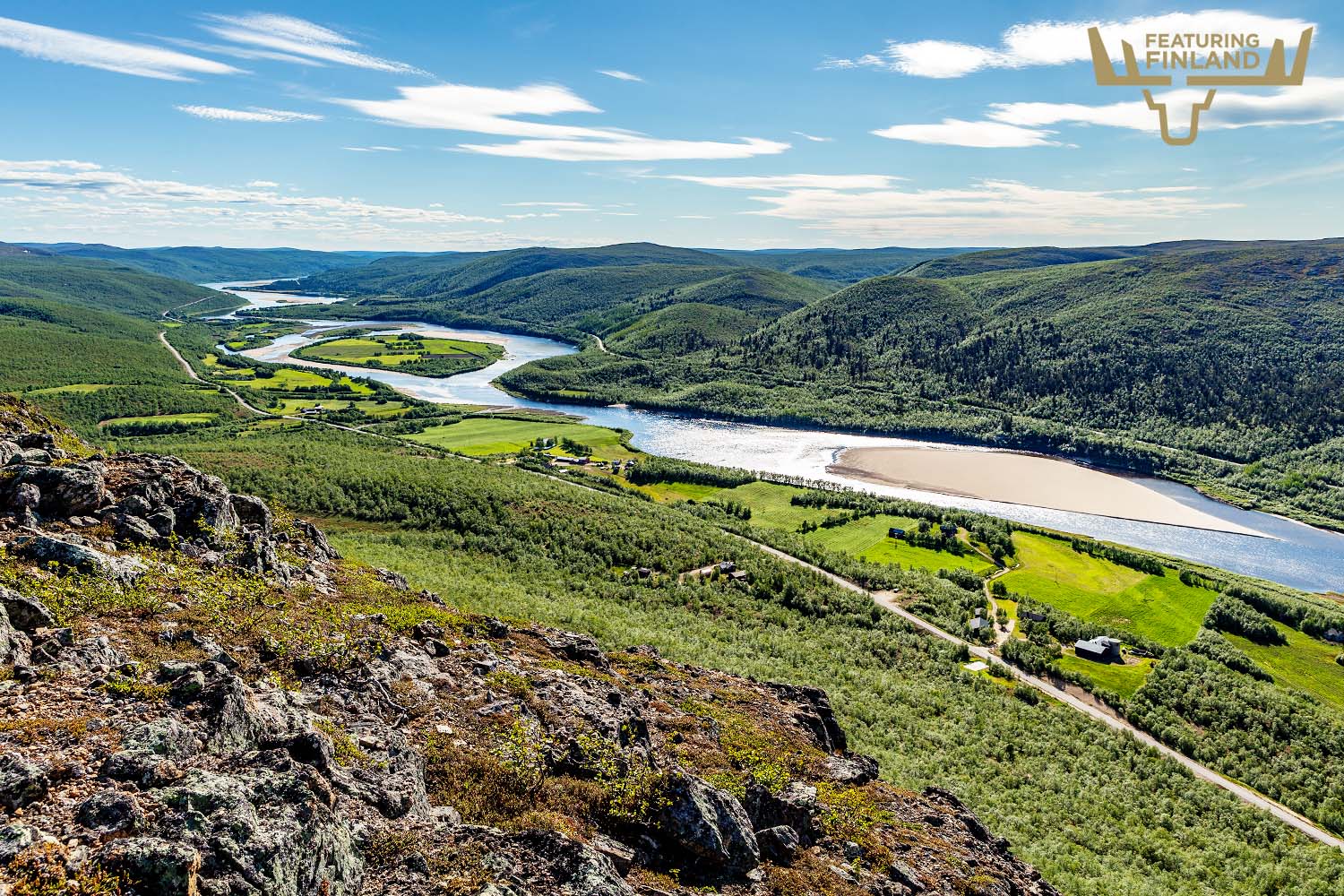
Along the way you will also find extensive wilderness areas and national parks where you can make day trips or multi-day hikes. The most famous natural wonder is Finland’s own Grand Canyon, Kevo Canyon.
Upon returning to Ivalo you have covered a distance of 500 kilometers. If you feel like driving more, you can continue on the E75 to Rovaniemi and all the way to Helsinki.
Read more: Lapland – Epic Outdoor Experiences in Northern Finland
Map of the best road trips in Finland
The map below shows the best road trips in Finland: Archipelago Trail, Saimaa Circuit, Wild East Tour and Lapland Round Trip.
Did you like this article? If you’re planning a trip to Finland, please book your hotel or rent a cabin or rental car by clicking on our affiliate links. We get a small commission, but you don’t pay any extra. Thanks for your support!

